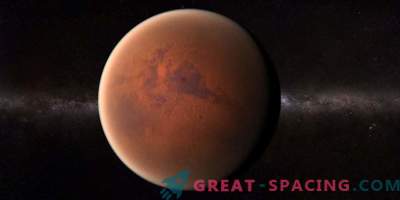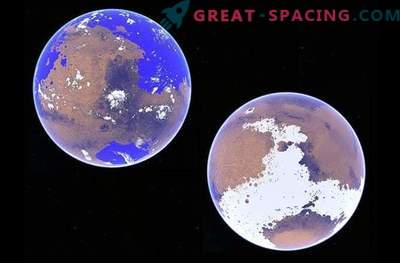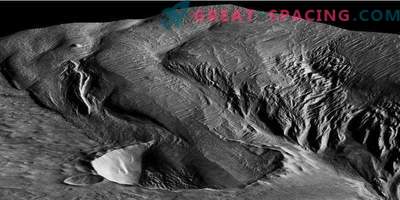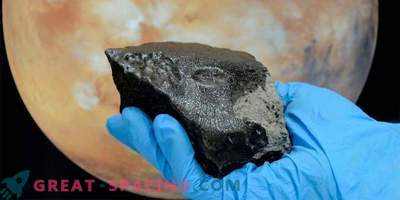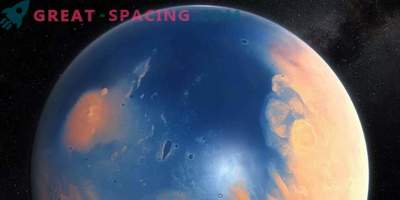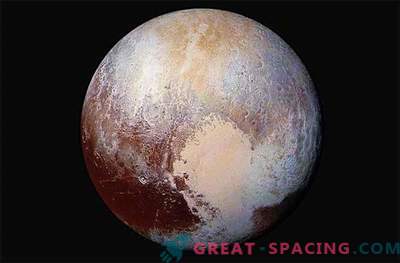
The early ocean of Arabia (blue left) would look like this at the time of its formation 4 billion years ago on Mars. But the ocean Deuteronilus (3.6 billion years ago) had a smaller coastline. Both coexisted with massive volcanic Farsis Province. Now there is no water, as it may have partially partially left in a frozen form under the surface and evaporated into space.
The new scenario is trying to explain how the supposed Martian oceans were created and disappeared in the last 4 billion years. This means that they appeared a few hundred million years earlier and were not as deep as they thought.
This idea was expressed by physicists from the University of California (Berkeley). They linked the existence of the oceans at the beginning of the history of the Red Planet with the growth of the largest volcanic system, Farsid Province.
They believe that volcanoes can play an important role in creating wet Martian conditions. Proponents of the initial dryness of Mars say that estimates of oceanic size do not agree with the amount of water that could be extracted from areas of permafrost and lost to space. The new model assumes that the oceans appeared before or at the same time as the largest volcanic feature of the planet, Farsid. At that time, this territory was smaller and did not distort the planet much. The absence of crustal deformation means that the seas would be smaller and could hold about half the water of earlier estimates. Most likely, volcanoes emitted gases into the atmospheric layer, forming global warming or the greenhouse effect, and also created channels that allow underwater waters to reach the surface and fill the northern plains.
Following the coastlines
The model also takes into account another argument: the estimated coastlines are irregular and vary in height per kilometer, although they should be at the same level. This irregularity can be explained if the first ocean began to form 4 billion years ago and existed intermittently during the first 20% growth of Farsid. The same goes for the second ocean Deuteronilus, which accompanied the last 17% growth of a volcanic area.
The province of Farsida extends over 5,000 km and has one of the largest volcanoes in our system. This volume forms a bulge on the opposite side of the planet and a depression between them. This explains why water estimates are twice as high as new research.
New hypothesis supplants old ones
They tried to explain the irregularity of the coastline 11 years ago with the help of another theory. Then it was assumed that Farsid was so massive that it forced the Martian axis of rotation to move several thousand miles to the south, throwing out coastlines.
But further research showed that Farsid appeared only 20 degrees above the equator. A new hypothesis is still in need of confirmation and direct observations of coastlines. InSight can help solve this problem. Start is scheduled for May. Scientists are going to install a seismometer on the surface to explore the inner part of the planet and find the frozen remains of the ancient ocean.

